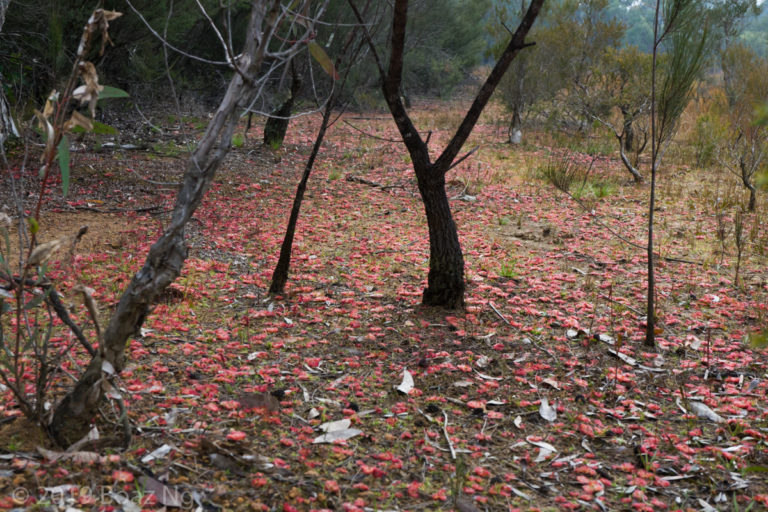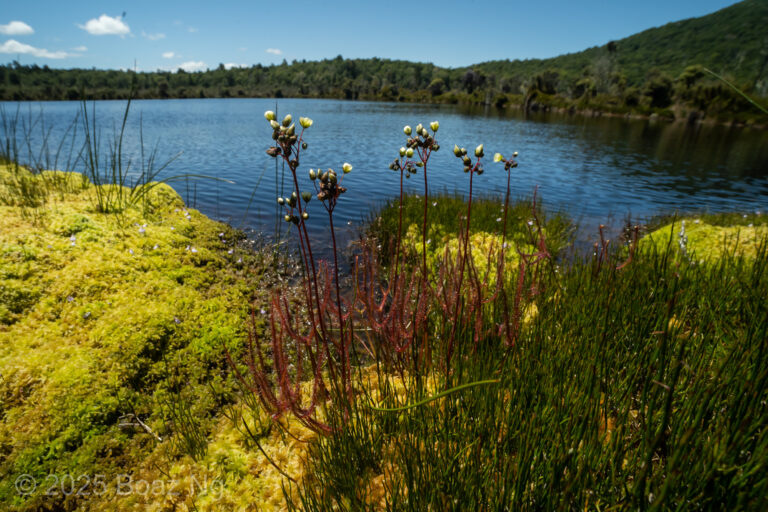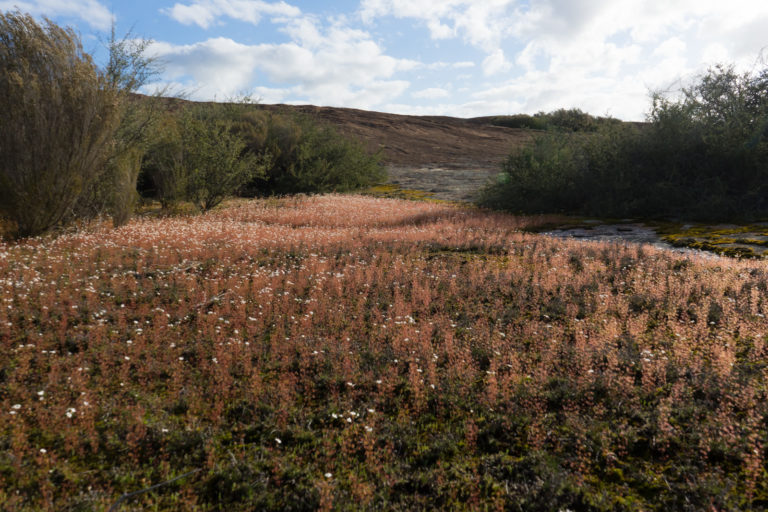Lake Toba
Having already experienced the horrors of the Trans-Sumatran Highway, I shuddered as I boarded the overnight, overly air-conditioned bus. My destination was Lake Toba, some 500 km and 17 hours away from Bukittinggi. How I managed to sleep through most of the journey through the constant assault of violent turns, broken roads and oppressively cold temperatures (seriously, why do overnight coaches in SE Asian nations feel the need to set the aircon on the coldest setting?) evades me but I’m sure glad I didn’t have to endure what would have otherwise been a horrific experience. As I opened my weary eyes, I noticed that the mosques had been replaced by churches, signalling my arrival in the Toba region – and with it, a new set of Nepenthes!
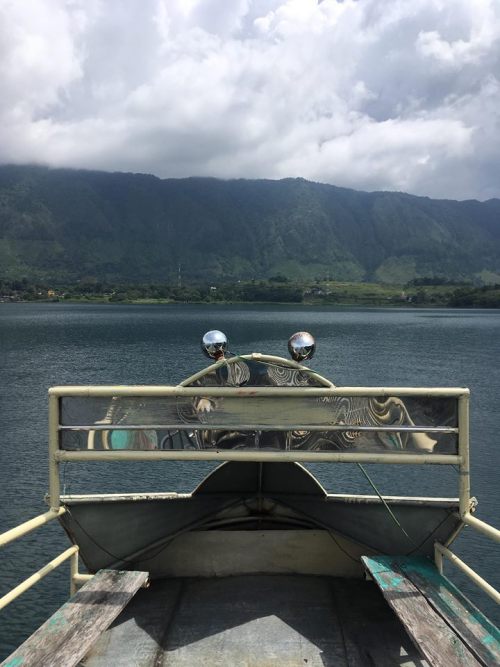
Lake Toba is a vast volcanic lake around 100 km long and at a 900 m elevation. Rimming the ancient caldera are peaks that reach over 2000 m high and host a range of highland Nepenthes. Inside the lake itself is Samosir Island, a volcanic resurgence with steep cliffs that reach around 1700 m high. Aside from the sleazy resorts, Western owned hostels and apparently widely available shrooms (I went during Ramadan so it’s safe to say there weren’t many other people there), these cliffs are home to large numbers of Nepenthes tobaica, a species synonymous with the area.
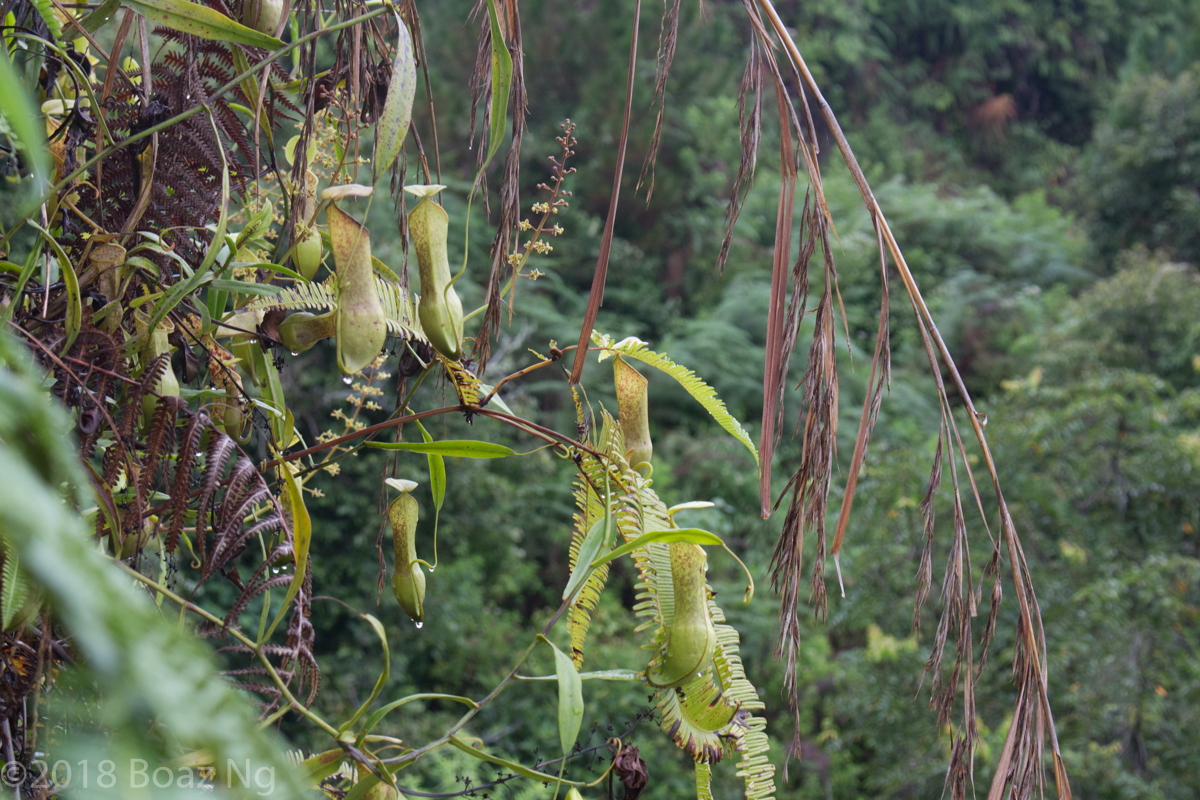
Finding these plants is not hard. One simply has to look for areas which are unlikely to have been cleared for farming, such as the sides of roads that have been carved into the steep cliffs (Google maps street view is your best friend here). Indeed, the entire island seems to be teeming with these plants, with the exception of the low-lying flats near the shore which have been cleared long ago. The species is well known for its variability in terms of patterning and coloration with different phenotypes growing right next to each other (more on that later).
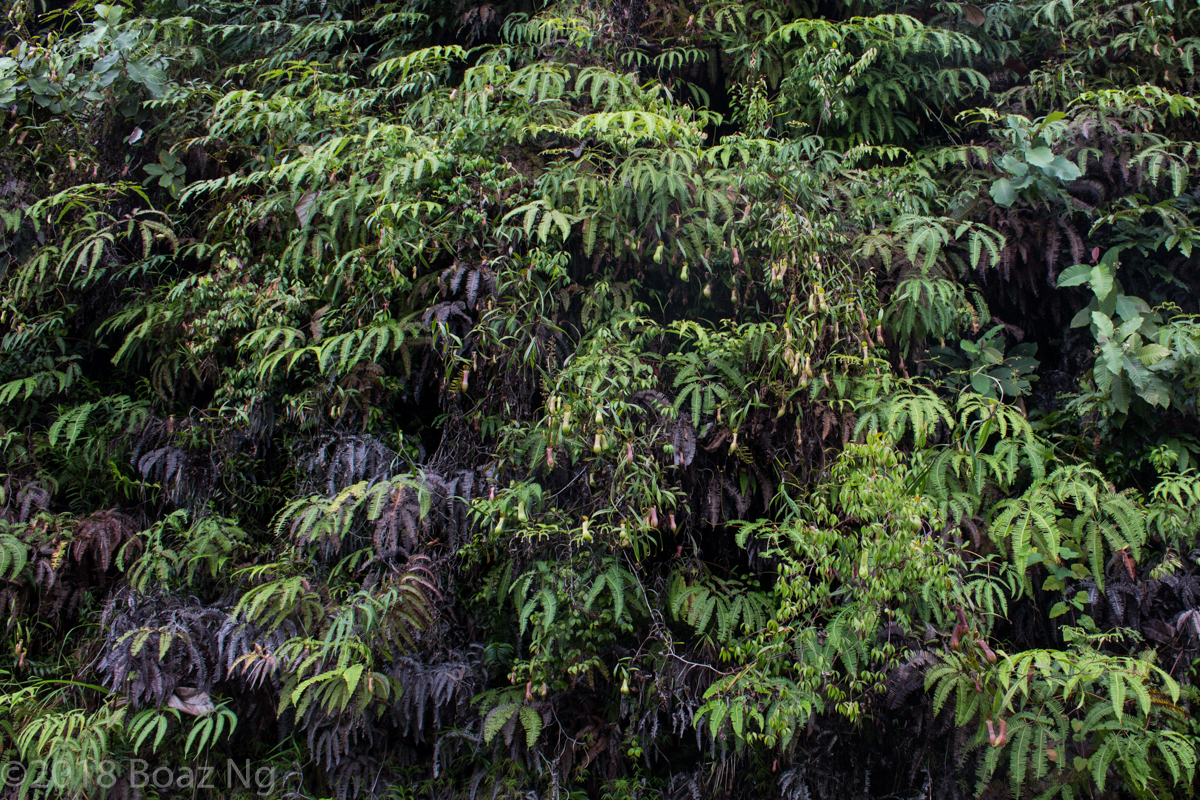
It’s amazing how quickly you take things for granted when they’re presented to you in abundance. When I spotted my first vines on the side of the road, I was so excited, yet an hour later I quickly grew bored of the species. My mind kept wandering to the other more spectacular species that I knew grew in the region.
The Last Mountain
I headed back to the mainland in preparation for the final mountain on my Nepenthes tour, which from Wikipedia, I knew contained an amazing diversity of species. The mountain is not one that is commonly climbed or even known by locals. This obscurity is one of the reasons why it is still abundant in Nepenthes, as opposed to the poached and degraded mountains I climbed earlier in my trip. The trail to this mountain is managed by Taman Eden 100, an award wining local conservation project in the area. Whilst the climb itself is not particularly technical, the path is rarely used and is quite obscure. I feel that it’s important to support local projects and encourage conservation so it is my assessment that a guide up this mountain is absolutely essential. Contact Taman Eden 100 to arrange one (Indonesian language skills are necessary). With machetes in hand, we set off to search for the highland Nepenthes of North Sumatra.

The climb starts off through pine plantations, then rises steeply into a hill covered with open Casuarina forest and thick bracken. Throughout this initial climb, Nepenthes tobaica was absolutely everywhere. I observed plants that represented a spectrum from lime green to purple black with the colour having no obvious correlation to its immediate environment (light intensity for example).
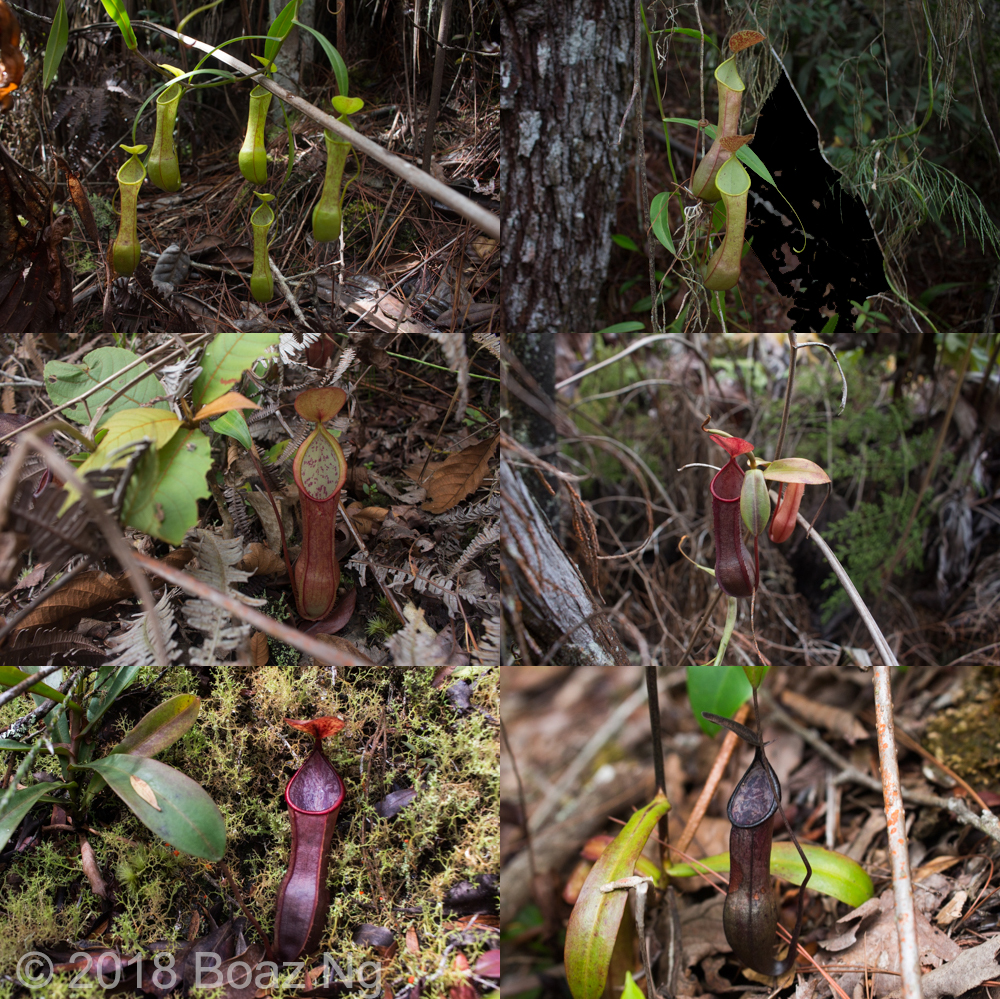
As we reached the first vantage point, a confronting wall of rainforest presented itself abruptly. The sudden change from open scrub to dense tropical jungle immediately brought along with it a new set of species. As we sank deeper into the growth, Nepenthes tobaica gradually disappeared and were replaced by species adapted for the deep forest. Whereas Nepenthes tobaica prefers exposed habitats, the highland species Nepenthes gymnamphora and Nepenthes rhombicaulis immerse themselves in the shadows below the canopy, with their pitchers often partially buried.

Pressing on higher through the overgrown path, I was beginning to wonder if the more magnificent highland species would ever present themselves. Despite having already seen three species, this was my last mountain and I was craving to see more before I left. There were enticing clues that these species were around me: Sphagnum moss began to present itself across the path, Nepenthes tobaica had disappeared – the forest was changing from rainforest to cloud forest! As I scrambled up a steep slope at around 1,800 m, I saw it – a vine with a tight assortment of large lanceolate leaves. A giant Nepenthes.

The natural hybrid between Nepenthes ovata and Nepenthes spectabilis is a stunning plant that forms gigantic pitchers which exhibit the best traits of both its parents. The spectabilis heritage endows an elegant elongated shape, a candy striped peristome and blotchy patterning. The ovata parentage result in a flared peristome and robust build. Together, the genes combine and cooperate to form a plant that is larger than both species, a phenomenon known as hybrid vigour.

I quickly realised that if a hybrid was around, that its parents must be near by. With some searching I quickly located Nepenthes spectabilis growing a few meters away. This impressive specimen had massive thickets of vines that stretched all the way from the the ground to the top of the canopy. Adorning the vines were hundreds of elegant, long and thin pitchers. The colour contrast was amazing – a deep purple brown base with splotches of almost fluorescent green.

Pressing on to reach the first summit before the afternoon storms, we continued to climb higher up the mountain. We soon found ourselves well and truly in the highland cloud forest, the most mystical of habitats. Here, the constant rain has long stripped the slopes of its fertility; cold temperatures and high winds stunt the trees into twisted and dwarfed contortions. The intermittent clouds bring on a humidity that supports the growth of thick mats of moss that cover every visible surface. Layers of spongy decomposition and moss provide and airy and semi-epiphytic substrate that supports the growth of the magnificent Nepenthes ovata. To serve this species justice, allow me to indulge you in pictures.
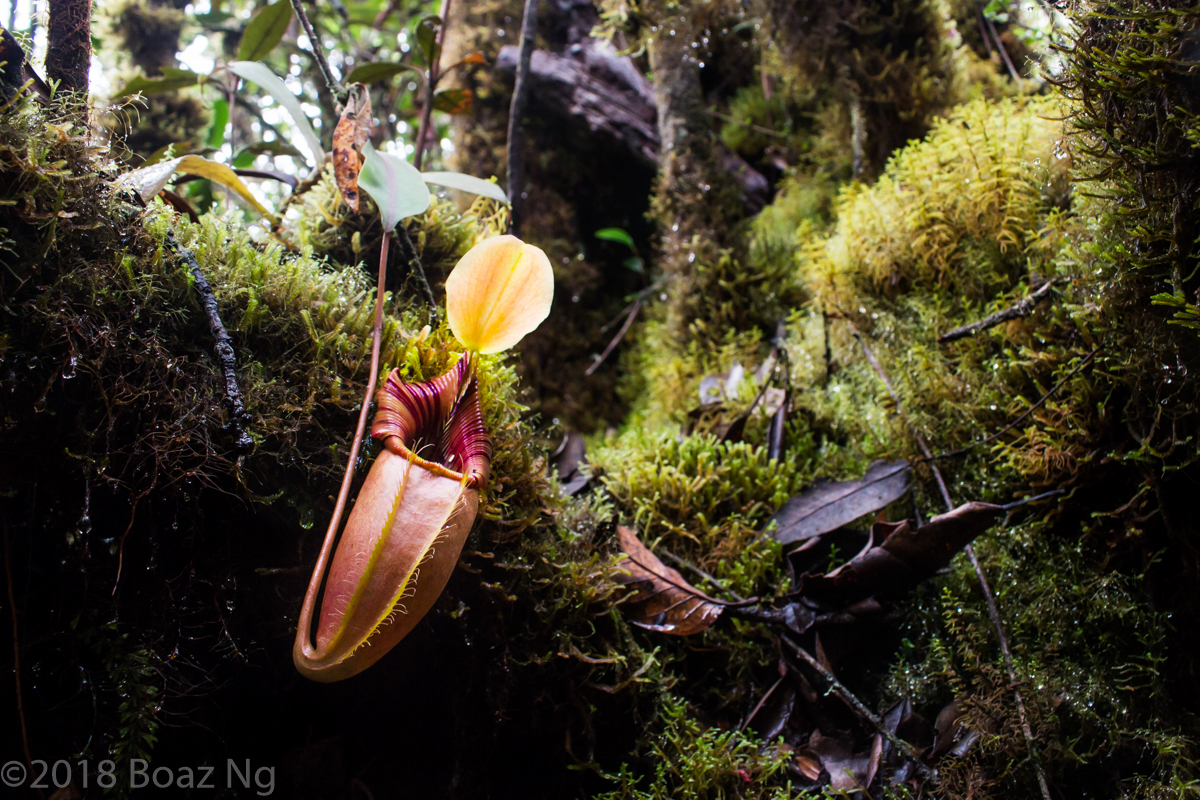
Nepenthes ovata is a handsome species, with large robust leaves and a sturdy, yet flamboyant pitcher. The pitchers, as the specific epithet suggests, is broadly oval shaped and ranges in colour from green to bronze to red, depending on the age and location of the plant. Its grand flaring peristome is the focal point of the pitcher, often exhibiting beautifully striped patterns in intense shades of red. To top it off, a curious almost circular lid adds another element of drama.

To provide some context of its environment, the species grows at around 2000 m above sea level. At these elevations, the equatorial heat fades into constantly cool temperatures, probably down to around 12 or so degrees celcius. The forests are immersed in cloud, bringing the humidity up to 100%. As a result, the substrate is always wet but never soaking due to the airiness of the decomposing moss and wood layers. Nepenthes ovata seemed to grow as a strict epiphyte, although the moss on the ground was a good enough simulation for some specimens.

As we finally reached the first summit at just under 2,150 m (the true summit lies in the distance through impenetrable jungle), the most stunning specimens of N. ovata presented themselves. On the exposed ridge, ancient plants capitalised on the increased light and threw large vines over the growth. Peculiar upper pitchers hung from above, their wide mouths and lime green colouration made them seem like a separate species altogether.

Here we encountered the most ferocious intermediate pitcher. With its undulating peristome fringed with long spines, a fang like rib projecting from its lid and its veiny body, the plant was surely among the oldest of its population.

Although the rains had miraculously held off for one day, the afternoon had crept in and it was time to return. Delighted with my amazing day climbing this untouched mountain with its host of Nepenthes, I made my way back to the base with an elated aura and sense of satisfaction.
This marks the end of my journey searching for Nepenthes in the mountains of Sumatra. Overall, it was an life-changing three week journey spanning three Sumatran provinces, countless towns and around 1000 km on the dreaded Trans-Sumatran Highway. I was rewarded with 11 species of Nepenthes – not bad for a trip organised by yourself!
Thank you for reading.
Yours truly,
Boaz

A comment on travel and nature in Sumatra
Sumatra is a wonderful destination to travel if you want to search for Nepenthes. However, without some research and local knowledge, these plants can be pretty hard to locate. In addition, non-touristy villages, regional centers and obscure mountains may be unsafe or outright inaccessible without local language skills. For a local guide with excellent connections (also, he accompanied me most of the way so he knows where to find the plants I encountered in this expedition), I must recommend and thank my friend Ilham. If you plan on traveling to western Sumatra, whether it be to search for plants or to enjoy the stunning volcanic scenery, be sure to contact him through his facebook page.
The continued presence of Nepenthes in the wild depends on the protection of their environment. This is especially pertinent in a country where poverty can understandable place more value on agricultural land than natural resources in the general mindset. In my journeys I encountered this first hand – widely accessed mountains such as Gunung Kerinci and Gunung Talang were heavily encroached by farmland and their tracks were poached of any Nepenthes. In contrast, the protected mountain in North Sumatra was a haven for these species.
Hence, I view it as an obligation for environmental tourists like myself to support local conservation projects and local guides (such as the Taman Eden 100 project). Whilst many mountains can be easily climbed by yourselves, engaging a local guide places an economic value on nature and thereby protects these fragile ecosystems for future generations.

